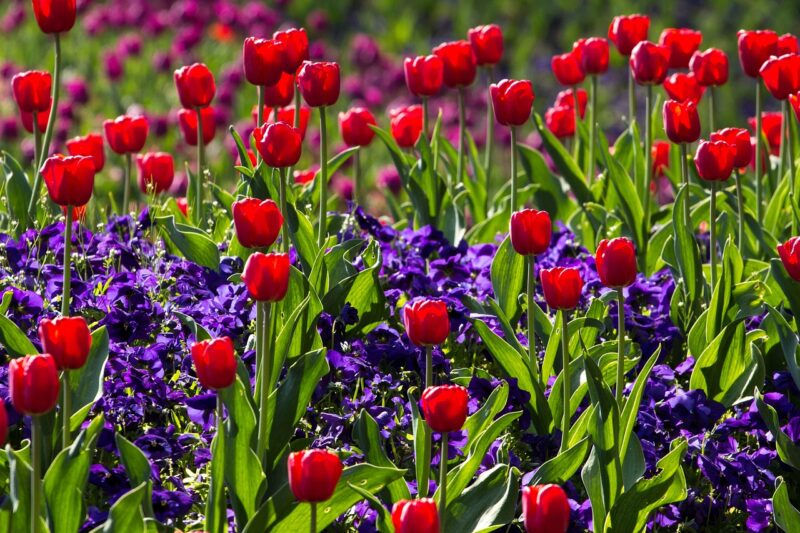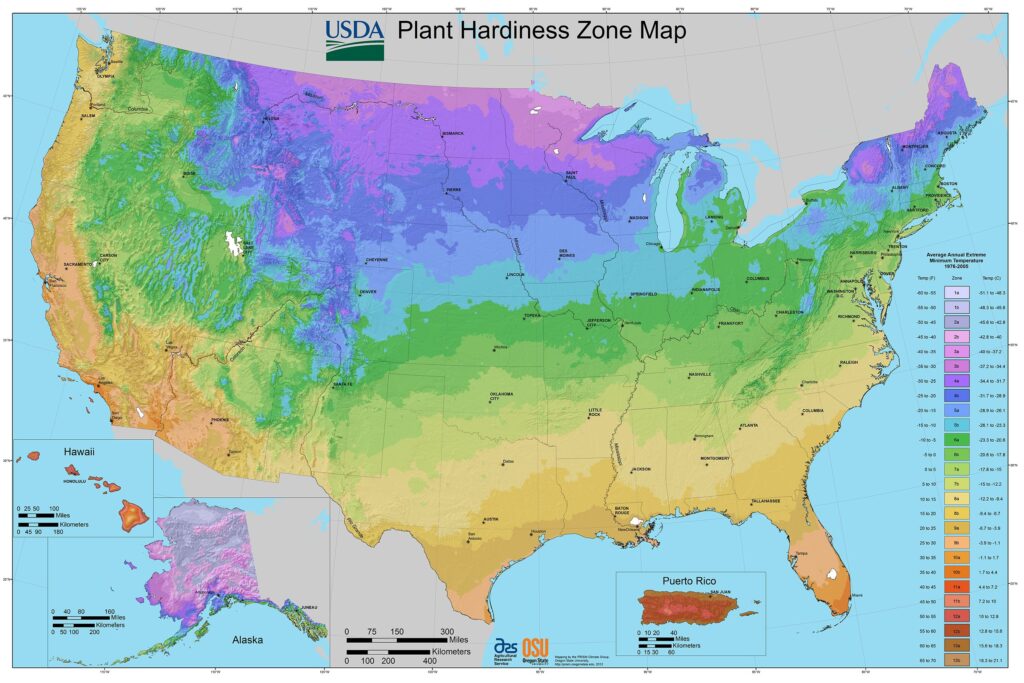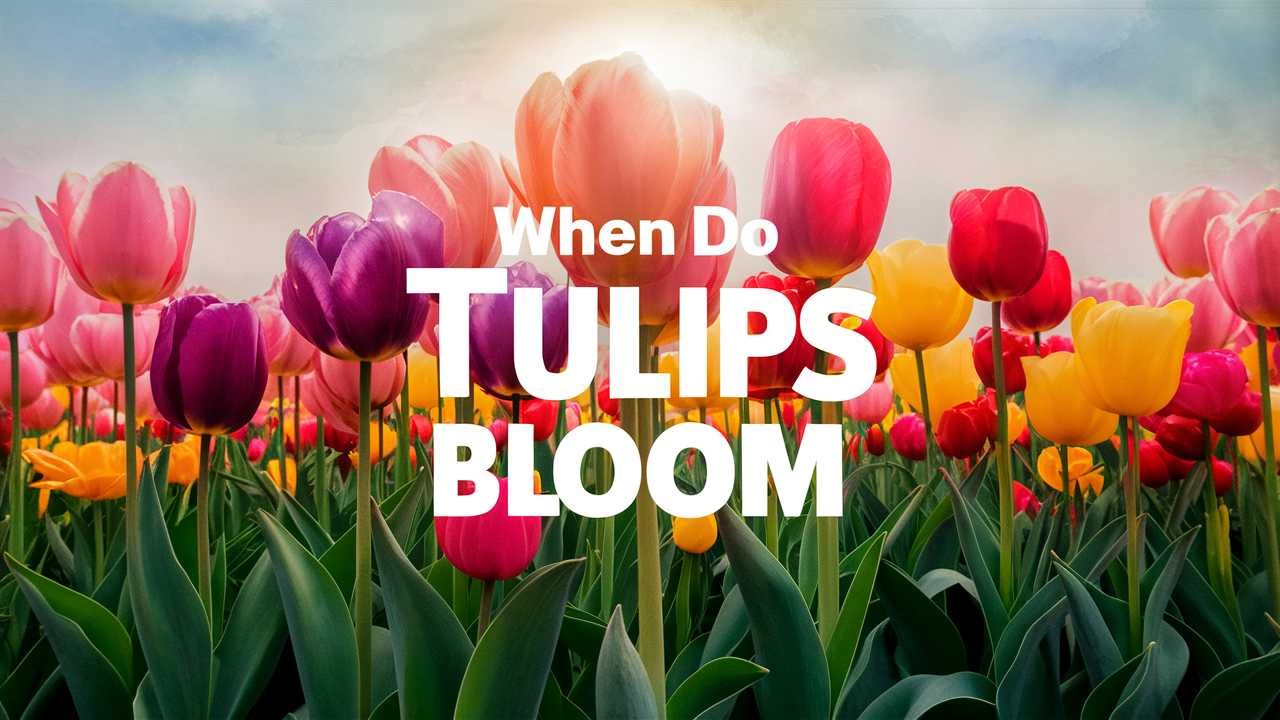In this blog post, we’ll dig deep into the blooming cycle of tulips, discover factors that influence their flowering, explore the different varieties, and even discuss how you can enjoy their beauty for more extended periods in your garden. So, let’s dig into all things tulip!
Understanding Tulip Bloom Timing
The General Blooming Season

Tulips typically bloom in the spring. The exact timing can vary based on several factors, including geographic location, climate conditions, and specific tulip varieties. In most parts of the Northern Hemisphere, especially in temperate regions, tulips generally bloom from late March to early May.
For a more precise understanding, the bloom time can be categorized into early, mid, and late bloomers:
Early Bloomers: These varieties may start flowering as early as late March or early April. Popular early bloomers include the ‘Yellow Emperor’ and ‘Dwarf Darwin’.
Mid-Bloomers: These tulips usually begin their flowering around mid-April. Some mid-season varieties include ‘Queen of Night’ and ‘Tulip Angelique’.
Late Bloomers: These tulips bloom in late April to early May. Examples include the ‘Parrot Tulip’ and ‘Green Wave’.
Climate Influences

The climate plays a crucial role in determining when tulips will bloom. Warmer temperatures can accelerate the growth and blooming process, whereas cooler weather can delay it.
In warmer regions, tulips can start blooming in early March. Conversely, in northern climates with colder springs, such as Canada or parts of the northern United States, tulips tend to bloom later, from late April to early May. For instance, the famed Keukenhof Gardens in the Netherlands usually sees peak tulip bloom around mid-April during optimal weather conditions.
The Importance of Hardiness Zones

Understanding your USDA hardiness zone can significantly affect your tulip-blooming plans. These zones range from 1 to 13 and are based on average annual minimum temperatures. Tulips thrive in zones 3 through 8, where they can have a successful growing season.
Zone 3: Tulips bloom later in this zone, usually from mid-April to early May.
Zone 4: Blooming typically occurs from late April to early May.
Zone 5: Expect a bloom from mid to late April.
Zones 6 to 8: These warmer zones allow for earlier blooming, often starting in late March through April.
Understanding your hardiness zone helps you know when to plant your bulbs and when to expect to see blooms.
The Growth Stages of Tulips

To fully appreciate when tulips bloom, it’s essential to understand their growth stages. After planting, tulips typically go through a series of developmental phases which contribute to their ultimate flowering.
Planting and Dormancy
Tulip bulbs are ideally planted in the fall, around September to October, so they can undergo a process called vernalization. This cold treatment is critical for tulips, as it encourages them to develop their flower buds within the bulb. During the winter months, while the bulbs are dormant, they anchor themselves into the soil and prepare for growth in the spring.
Breaking Dormancy
As temperatures warm up in early spring, the tulip bulbs sense the changes through soil temperatures rising. This triggers the bulbs to break dormancy and begin sprouting. You’ll notice green shoots emerging from the ground around late March, signifying that blooming is on the horizon.
Flower Development
After the initial sprouts appear, it takes about three to six weeks for the tulips to journey from green shoots to blooming flowers, depending on the specific variety and local conditions. During this phase, energy stored in the bulbs is utilized to grow stems and leaves before the flowers burst open.
The Bloom
Typically, each tulip bloom lasts about five to seven days, depending on weather conditions. If the weather is cool, blooms may last longer, but in hot weather, blooming may be shorter. Notably, once tulips bloom, they last up until the end of April or early May, after which they begin to fade as spring progresses into summer.
Factors Influencing Bloom Time

Several additional factors can affect exactly when tulips bloom, and understanding these can help enhance your gardening experience.
Soil Temperature
The optimal soil temperature for tulips to bloom is around 60°F (15°C). When temperatures rise above this threshold, plants may experience stress, leading to earlier bloom times. In contrast, cooler soil temperatures can delay flowering.
Watering Requirements
Proper watering is critical for successful blooming. Tulip bulbs need to be adequately hydrated but should never be waterlogged, which can cause rot. Adequately timed watering helps to ensure your tulips have sufficient moisture for healthy growth and flowering.
Sunlight Exposure
Tulips thrive in full sun to partial shade. Generally, they should receive at least six hours of sunlight per day for optimal blooming. Insufficient sunlight can hinder growth and delay flowering.
Fertility and Nutrition
Fertilizing tulip bulbs at planting and again as they start to grow can enhance flowering. A balanced fertilizer rich in potassium and phosphorus can bolster healthier flowers and vibrant colors.
Pest and Disease Management
Pests, such as aphids, and diseases, like botrytis blight, can impact blooming times. Keeping an eye on your tulip plants and employing organic or chemical pest control measures when necessary can help ensure your tulips reach their full blooming potential.
Popular Tulip Varieties and Their Bloom Times

While we’ve touched upon the general blooming periods of tulips, it’s worth exploring some popular varieties in more detail. Each has its unique charm and blooming habits:
Darwin Hybrid Tulips
These sturdy tulips bloom in mid to late spring and are known for their large flowers and vibrant colors. They are revered for their longevity in the garden, often lasting several weeks. Varieties like ‘Apeldoorn’ and ‘Red Impression’ fall under this category.
Triumph Tulips
American hybridizers developed the Triumph tulips to combine characteristics of early and Darwin tulips. They typically bloom in mid-April and are popular for their robust stems and star-shaped flowers. The ‘White Flag’ and ‘Purple Prince’ are excellent examples.
Parrot Tulips
Boasting fringed and feather-like petals, Parrot tulips bloom in late spring. Their exotic appearance makes them highly sought after. Varieties like ‘Café Noir’ and ‘Raimond de Dorlodot’ can add a unique flair to any garden.
Fringed Tulips
These tulips have ruffled edges and can bloom in mid to late spring. They are perfect for adding texture and intrigue to any floral arrangement. Notable examples include ‘Fringed Elegance’.
Triumph Tulips
Another mid-season variety, Triumph tulips are known for their sturdy stems and wide range of colors. They make excellent cut flowers and can brighten any garden with blooms like ‘Orange Princess’ and ‘Hasselt’.
Extending the Tulip Bloom Season

If you are eager to enjoy tulips for as long as possible, there are several strategies you can implement.
Staggered Planting
One of the best ways to extend the tulip bloom season is through staggered planting. By planting bulbs at different times in the fall or by mixing early, mid, and late-blooming varieties, you can create a dazzling display that lasts for weeks. This method ensures that as one variety begins to fade, another is just coming into bloom.
Cutting and Indoor Forcing
Should your tulips bloom too quickly in your outdoor garden or if you want to enjoy them indoors, consider cutting them at the right time. Picking them just before they fully open can prolong their beauty in indoor arrangements. Moreover, some gardeners opt to force tulips by chilling bulbs in the refrigerator, then planting them indoors for controlled bloom timing.
Companion Planting
Integrating companion plants that bloom alongside or just after tulips can create a sustained floral display. For example, consider planting pansies, forget-me-nots, or daffodils that can take center stage as tulips start to fade.
Proper Care Post-Blooming
After the tulip blooms have faded, it’s essential to allow the foliage to die back naturally. This process enables the bulbs to store energy for next year’s bloom cycle. Trim the leaves only after they turn yellow to ensure tulips continue to thrive year after year.





